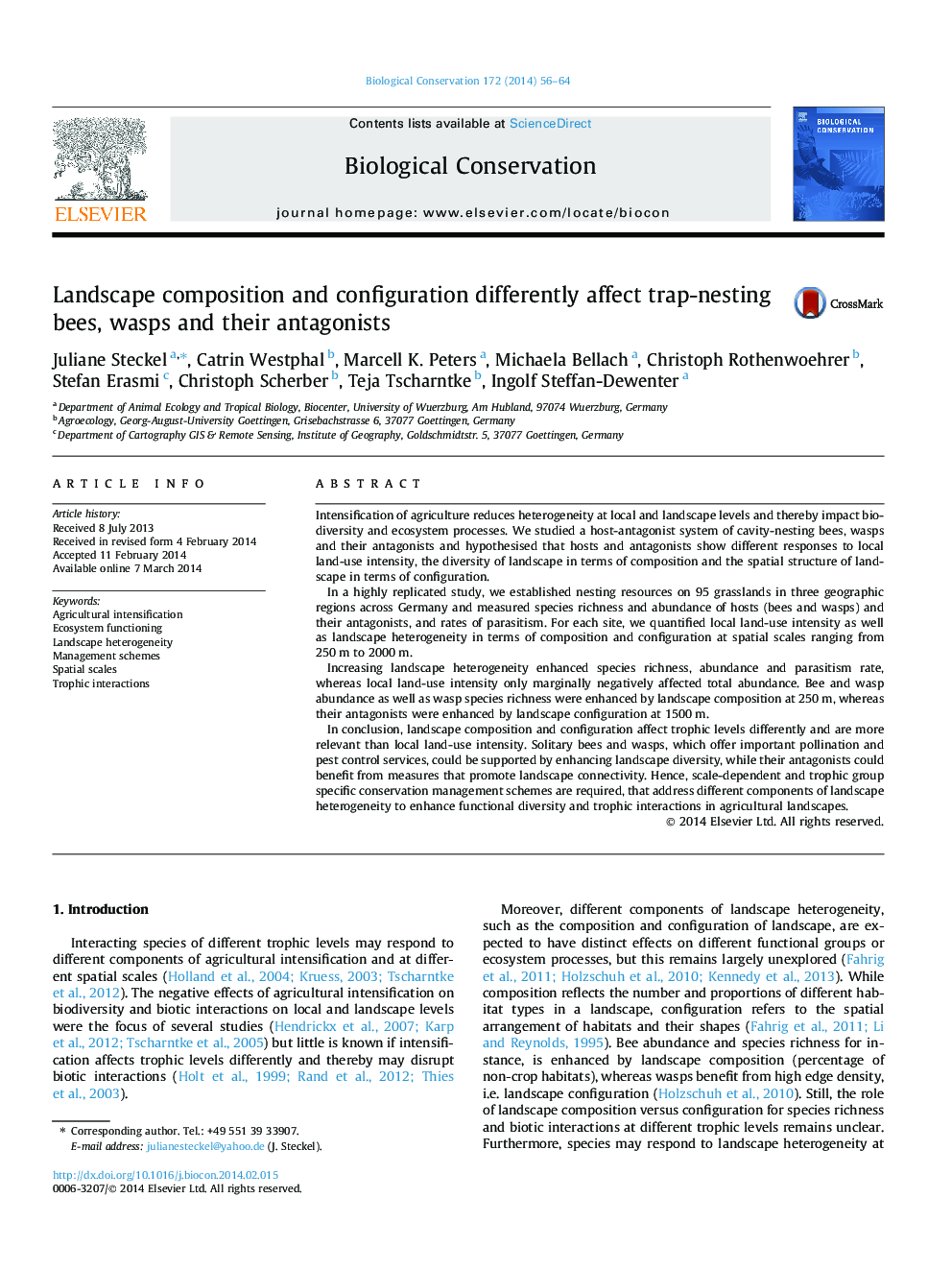| Article ID | Journal | Published Year | Pages | File Type |
|---|---|---|---|---|
| 6299777 | Biological Conservation | 2014 | 9 Pages |
Abstract
In conclusion, landscape composition and configuration affect trophic levels differently and are more relevant than local land-use intensity. Solitary bees and wasps, which offer important pollination and pest control services, could be supported by enhancing landscape diversity, while their antagonists could benefit from measures that promote landscape connectivity. Hence, scale-dependent and trophic group specific conservation management schemes are required, that address different components of landscape heterogeneity to enhance functional diversity and trophic interactions in agricultural landscapes.
Keywords
Related Topics
Life Sciences
Agricultural and Biological Sciences
Ecology, Evolution, Behavior and Systematics
Authors
Juliane Steckel, Catrin Westphal, Marcell K. Peters, Michaela Bellach, Christoph Rothenwoehrer, Stefan Erasmi, Christoph Scherber, Teja Tscharntke, Ingolf Steffan-Dewenter,
